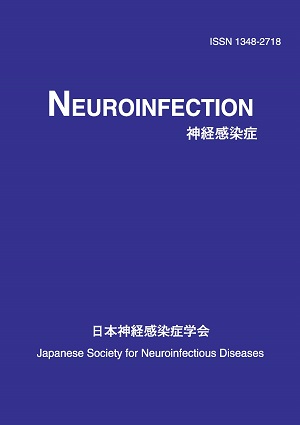Volume 25, Issue 1
Displaying 1-29 of 29 articles from this issue
- |<
- <
- 1
- >
- >|
-
2020Volume 25Issue 1 Pages M1-
Published: 2020
Released on J-STAGE: May 13, 2020
Download PDF (126K)
-
2020Volume 25Issue 1 Pages 1-
Published: 2020
Released on J-STAGE: May 13, 2020
Download PDF (863K)
-
2020Volume 25Issue 1 Pages 7-
Published: 2020
Released on J-STAGE: May 13, 2020
Download PDF (723K)
-
2020Volume 25Issue 1 Pages 15-
Published: 2020
Released on J-STAGE: May 13, 2020
Download PDF (3150K)
-
2020Volume 25Issue 1 Pages 23-
Published: 2020
Released on J-STAGE: May 13, 2020
Download PDF (997K)
-
2020Volume 25Issue 1 Pages 30-
Published: 2020
Released on J-STAGE: May 13, 2020
Download PDF (373K)
-
2020Volume 25Issue 1 Pages 35-
Published: 2020
Released on J-STAGE: May 13, 2020
Download PDF (197K) -
2020Volume 25Issue 1 Pages 39-
Published: 2020
Released on J-STAGE: May 13, 2020
Download PDF (1192K) -
2020Volume 25Issue 1 Pages 44-
Published: 2020
Released on J-STAGE: May 13, 2020
Download PDF (737K)
-
2020Volume 25Issue 1 Pages 49-
Published: 2020
Released on J-STAGE: May 13, 2020
Download PDF (1317K) -
2020Volume 25Issue 1 Pages 55-
Published: 2020
Released on J-STAGE: May 13, 2020
Download PDF (268K) -
2020Volume 25Issue 1 Pages 60-
Published: 2020
Released on J-STAGE: May 13, 2020
Download PDF (217K)
-
2020Volume 25Issue 1 Pages 65-
Published: 2020
Released on J-STAGE: May 13, 2020
Download PDF (5682K) -
2020Volume 25Issue 1 Pages 72-
Published: 2020
Released on J-STAGE: May 13, 2020
Download PDF (1371K) -
2020Volume 25Issue 1 Pages 80-
Published: 2020
Released on J-STAGE: May 13, 2020
Download PDF (785K) -
2020Volume 25Issue 1 Pages 83-
Published: 2020
Released on J-STAGE: May 13, 2020
Download PDF (601K)
-
2020Volume 25Issue 1 Pages 87-
Published: 2020
Released on J-STAGE: May 13, 2020
Download PDF (640K) -
2020Volume 25Issue 1 Pages 92-
Published: 2020
Released on J-STAGE: May 13, 2020
Download PDF (169K) -
2020Volume 25Issue 1 Pages 95-
Published: 2020
Released on J-STAGE: May 13, 2020
Download PDF (1437K) -
2020Volume 25Issue 1 Pages 100-
Published: 2020
Released on J-STAGE: May 13, 2020
Download PDF (704K)
-
2020Volume 25Issue 1 Pages 105-
Published: 2020
Released on J-STAGE: May 13, 2020
Download PDF (955K) -
2020Volume 25Issue 1 Pages 113-
Published: 2020
Released on J-STAGE: May 13, 2020
Download PDF (1246K) -
2020Volume 25Issue 1 Pages 118-
Published: 2020
Released on J-STAGE: May 13, 2020
Download PDF (276K) -
2020Volume 25Issue 1 Pages 125-
Published: 2020
Released on J-STAGE: May 13, 2020
Download PDF (2479K) -
2020Volume 25Issue 1 Pages 133-
Published: 2020
Released on J-STAGE: May 13, 2020
Download PDF (247K)
-
2020Volume 25Issue 1 Pages 139-
Published: 2020
Released on J-STAGE: May 13, 2020
Download PDF (1327K)
-
2020Volume 25Issue 1 Pages 146-
Published: 2020
Released on J-STAGE: May 13, 2020
Download PDF (239K)
-
2020Volume 25Issue 1 Pages 150-
Published: 2020
Released on J-STAGE: May 13, 2020
Download PDF (822K)
-
2020Volume 25Issue 1 Pages A1-
Published: 2020
Released on J-STAGE: May 13, 2020
Download PDF (43K)
- |<
- <
- 1
- >
- >|
